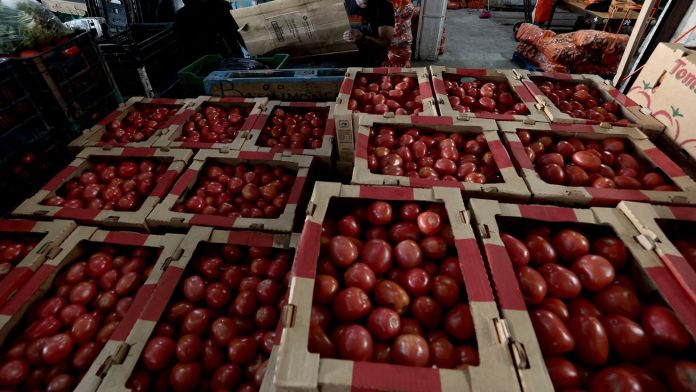U.S. Imposes 17% Tariff on Mexican Tomatoes
The U.S. Department of Commerce recently announced a 17% tariff on Mexican tomatoes, suspending a previous trade agreement in effect since 2019. This tariff acts as a tax on imports and could significantly impact grocery store prices across the United States.
Why Mexican Tomatoes Matter to the U.S.
Tomatoes are one of the five most popular fruits and vegetables in America, used fresh, canned, or as ingredients in salsa, pizza sauce, marinara, and more. Most of the tomatoes consumed in the U.S. come from Mexico, especially outside the peak tomato season (May through September).
Historical Context of Tomato Trade
In the early 1990s, Mexico supplied only about 20% of U.S. tomatoes, with the majority grown domestically. The North American Free Trade Agreement (NAFTA) in 1994 gradually shifted production, making Mexican tomatoes a more affordable and diverse option for U.S. consumers. Today, 70% of tomatoes in the U.S. are imported from Mexico, according to the Florida Tomato Exchange.
Price Increases Expected
The Commerce Department cited unfair pricing practices for Mexican tomatoes as the reason for the new tariff. Mexico has responded by setting minimum prices for various tomato types, including cherry, Roma, heirloom, and stemmed tomatoes. Analysts forecast potential price jumps of up to 40% for round tomatoes and 26% for cherry and grape varieties.
Industry experts estimate that the tariff could raise tomato prices in U.S. grocery stores by 7–11%, meaning tomatoes priced at $3.99 per pound could cost around $4.49. Restaurants may also pass these higher costs onto customers, impacting menu prices for dishes like salsa, pizza, and tomato-based sauces.
What Consumers Can Do
While the situation develops, consumers are encouraged to buy fresh, local tomatoes during peak season. Enjoying farmers’ market tomatoes can help mitigate the impact of rising prices. For recipe inspiration, try Allrecipes’ top-rated tomato dishes or other fresh tomato recipes from around the world.













